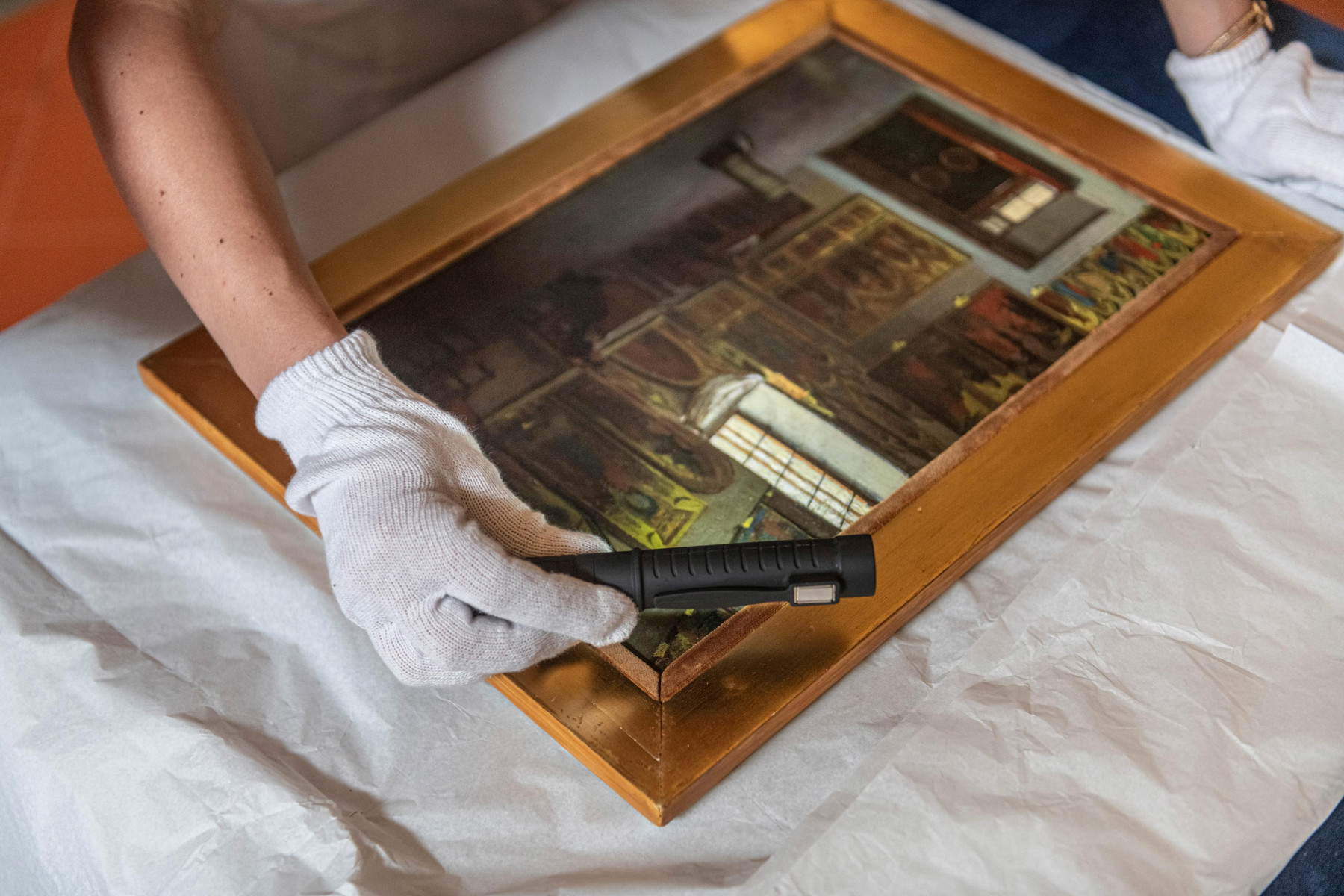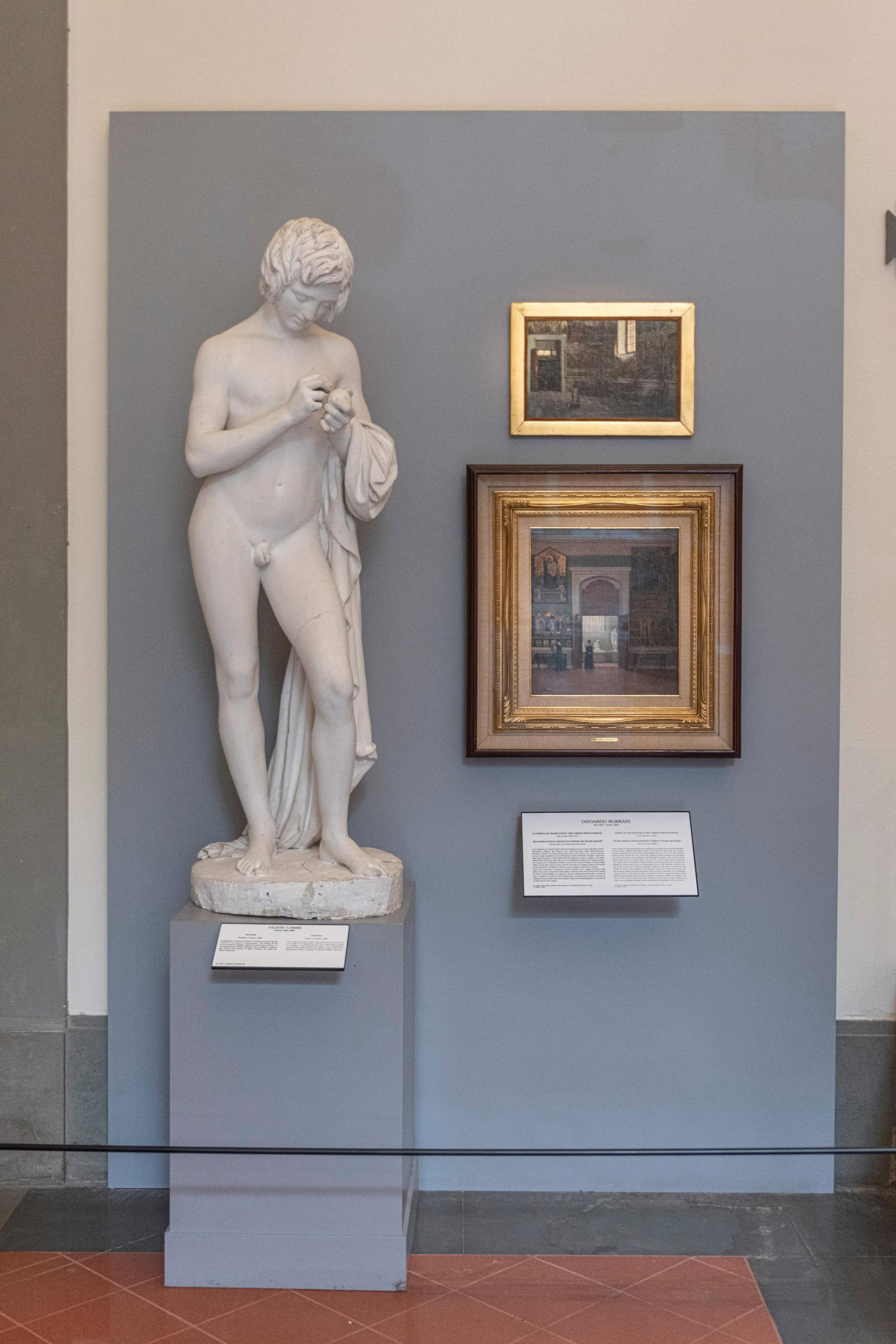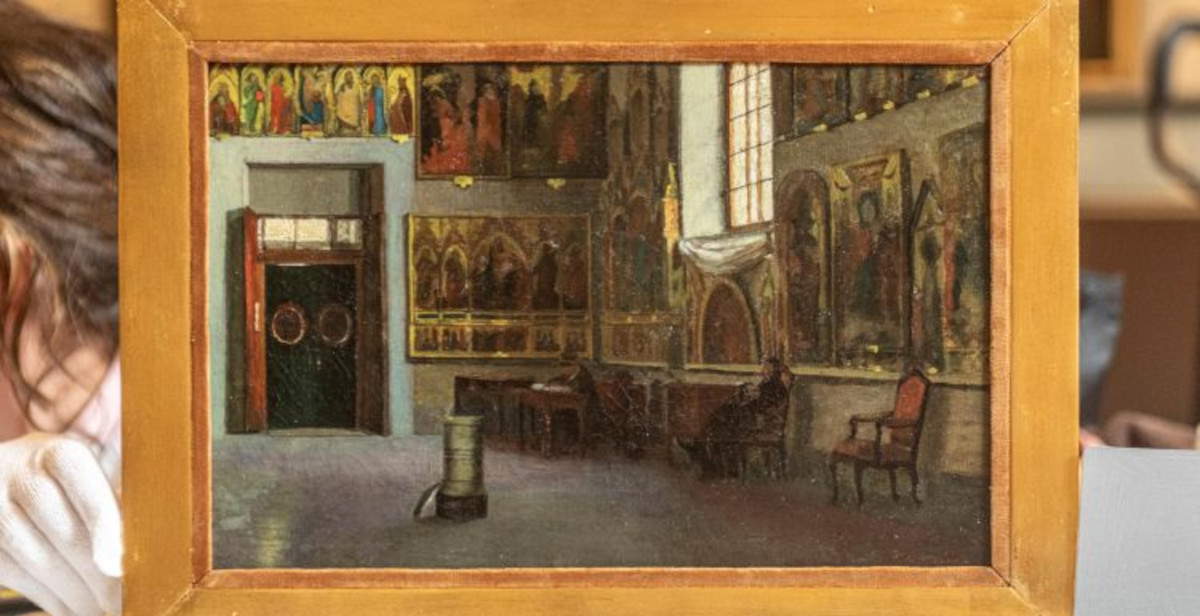The Galleria dell’Accademia in Florence renews part of its exhibition layout with two works from the Tuscan 1800s: The Gallery of Old Paintings by Odoardo Borrani (Pisa, 1833 - Florence, 1905) and Interior with Odalisque by Stefano Ussi (Florence, 1836-1922). Both paintings, which have never before been exhibited to the public, are part of the Gipsoteca’s museum itinerary, helping to deepen the relationship between the Academy of Fine Arts, its collections and the artists who were trained in its environments.
"The long-term deposit of Odoardo Borrani’s painting The Gallery of Old Paintings at the Accademia Gallery represents a significant opportunity to deepen and return to the public an important chapter in the history of our museum and the nineteenth-century layout of its rooms,“ comments Massimo Osanna, Director General of Museums. ”At the same time, it is a virtuous example of collaboration between public museum institutions, which share the responsibility of enhancing and rereading together a common heritage. I thank the Director of the National Gallery of Modern and Contemporary Art in Rome, Renata Cristina Mazzantini, for making possible, with full availability and spirit of collaboration, this project of valorization and recovery of a historical memory that enriches the narrative of the Accademia Gallery."

“The display of Borrani’s and Aconzio’s paintings at the entrance to the Gipsoteca,” comments Giulia Coco, Art Historian Officer and curator of the nineteenth-century collections of the Galleria dell’Accademia in Florence, “is intended to introduce the visitor to the extraordinary nineteenth-century salon and the origins of the Galleria dell’Accademia, showing the physical, as well as artistic, historical and cultural, link that has existed between our museum and the Accademia di Belle Arti since the late eighteenth century. Indeed, the rare evidence of views and glimpses of the Gallery in the late nineteenth century offers visitors the opportunity to deepen and improve their knowledge and understanding of the origins of a complex and diverse museum, as the Accademia Gallery of Florence is, through direct viewing of first-hand iconographic sources.”
“The Accademia delle Arti del Disegno is grateful that a work from its collection is permanently housed in the museum itinerary of the Galleria dell’Accademia,” commented Cristina Acidini, President of the Accademia delle Arti del Disegno, “with which we are united by our origin and common history as well as our commitment to the preservation and enhancement of our artistic heritage.”

The first of the two paintings, created by Odoardo Borrani, arrives on long-term deposit from the National Gallery of Modern and Contemporary Art in Rome. The work, The Gallery of Ancient Paintings, is now displayed in the museum’s left transept, at the entrance to the Gipsoteca, in direct dialogue with another canvas by the same author, Alla Galleria dell’Accademia, acquired by the Italian state in 2003 and already in the Florentine collection. The two compositions visually restore the interiors of the Galleria dell’Accademia as they were at the end of the nineteenth century, showing at the same time the educational function and public exhibition role that the museum held from its origins.
Commissioned in 1784 by Grand Duke Pietro Leopoldo of Tuscany as an extension of the Academy of Fine Arts, the Accademia Gallery was born with a didactic vocation, designed to offer students the opportunity to engage with works of art from the past. Beginning in the 19th century, however, the Gallery also assumed the character of a space open to the public, at first to an inner circle and then to an increasingly broader public. The intent was to bring visitors closer to contemporary production by hosting works created by the Academy’s most promising young artists: winners of three-year competitions or recipients of scholarships for further study outside Tuscany, particularly in Rome.

In Borrani’s painting Alla Galleria dell’Accademia, the viewer may recognize some of the plaster casts preserved in the Gipsoteca, including Ulisse Cambi’s sculpture, Aconzio writing the name of his beloved Cidippe (1835). The placement of the sculpture in the same position depicted in the Pisan artist’s canvas underscores the coherence of the display and strengthens the link between the historical works and their pictorial evocation. The decision to exhibit today also The Gallery of Old Paintings ideally completes the visual reconstruction of the Gallery’s function and identity in its early decades.
The rearrangement also provided an opportunity to bring to light another 19th-century painting that has never been presented to the public: it is Interior with Odalisque, created by Stefano Ussi. The work, which belonged to the Accademia delle Arti del Disegno and has been on deposit at the Accademia Gallery for many years, comes from the testamentary bequest of the painter’s wife, Linda Salimbeni Ussi. Despite its presence in the museum’s deposits, the canvas had not been included in the exhibition itinerary until now. Ussi created the work in the context of his travels in North Africa and the Near East. In fact, the painter had taken part in the Italian expedition charged with documenting the inauguration of the Suez Canal in 1869 and later visited Morocco in 1875 in the company of Edmondo De Amicis and Cesare Biseo. The painting is part of his Orientalist production, a popular current in the second half of the 19th century, in which elements of direct observation were combined with an idealized and often theatrical representation of environments and characters. Indeed, the Accademia Gallery’s Gipsoteca houses numerous works by Tuscan artists who, like Borrani and Ussi, trained among the classrooms of the Accademia di Belle Arti and actively participated in the cultural life of the time. These include figures such as Luigi Mussini, Eugenio Prati and Silvestro Lega. Their works, often the result of prizes won in academic competitions, represent a heritage that testifies to the liveliness of artistic production linked to the Florentine institution and its openness to a national and international dimension.
 |
| Florence, two works by Borrani and Ussi enrich the Galleria dell'Accademia |
Warning: the translation into English of the original Italian article was created using automatic tools. We undertake to review all articles, but we do not guarantee the total absence of inaccuracies in the translation due to the program. You can find the original by clicking on the ITA button. If you find any mistake,please contact us.